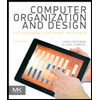
Consider the transportation analogy in Section 6.1.1. If the passenger is analagous to a datagram, what is analogous to the link layer frame?
Link Layer:
- In the OSI (Open Systems Interconnection) model, data link layer is the 2nd layer. This layer is used to transfer data between neighboring network nodes on a Wide Area Network or on the same Local Area Network.
- This layer uses error detection bits and it corrects the errors.
Explanation of Solution
Transportation analogy:
In the section 6.1.1, the travel agent plans a trip for tourists from different places.
- The travel agent decides the convenient plans for the tourists and the agent makes three reservations.
- The three reservation trips are direct between two adjacent locations and also they contain different transportation modes.
- Here, if the passengers are analogous to the datagram, then the transportation modes are analogous to the link layer frame.
Therefore, the transportation modes are analogous to link layer frame.
Want to see more full solutions like this?
Chapter 6 Solutions
Computer Networking: A Top-Down Approach (7th Edition)
Additional Engineering Textbook Solutions
Database Concepts (8th Edition)
Java How to Program, Early Objects (11th Edition) (Deitel: How to Program)
INTERNATIONAL EDITION---Engineering Mechanics: Statics, 14th edition (SI unit)
Modern Database Management
Starting Out with Programming Logic and Design (5th Edition) (What's New in Computer Science)
Java: An Introduction to Problem Solving and Programming (8th Edition)
- I need help with this problem and an step by step explanation of the solution from the image described below. (Introduction to Signals and Systems)arrow_forwardI need help with this problem and an step by step explanation of the solution from the image described below. (Introduction to Signals and Systems)arrow_forwardI need help with this problem and an step by step explanation of the solution from the image described below. (Introduction to Signals and Systems)arrow_forward
- I need help with this problem and an step by step explanation of the solution from the image described below. (Introduction to Signals and Systems)arrow_forwardQ1.A. Sketch a graph of f(x), then find the Fourier series of f(x) for three values and has a period of 2π. (8 marks) f(x) = { x² x²sin 3x -π≤ x ≤ 0) 0 ≤ x ≤ narrow_forwardQ3.A. Given the flow graph below, Find the H(z)? x(z) y(z) (7 marks) z-1 ↓arrow_forward
- Q2.A. Find the inverse Z-Transforms using partial fraction method of the following function: (8 marks) Z-1 F(z) = 2+3Z-1 + (1-2-1) (1-12-12arrow_forwardI've been having trouble solving this problem from my engineering analysis class textbook.arrow_forwardCoding - Which option goes where in this?arrow_forward
- Binary mutliplication, explain all methods and workings usedarrow_forwardthis module is java 731 , follow all instructions and make sure the outputs are like what they expect and make sure the code is 100% correct . include all comments , layout and structure to be perfect too, thanks. Question 1: (40 MARKS) E-Hailing Bicycle Management System Case Study:An e-hailing company that rents out bicycles needs a system to manage its bicycles, users, and borrowing process. Each user can borrow up to 2 bicycles at a time, specifically for families with children 18 years or below. The system must track the bicycles (name, make, type, and availability) and users (name, ID, and borrowed bicycles). The company also wants to ensure that the system uses a multidimensional array to store information about the bicycles. Requirements: Add and View Bicycles: Borrow Bicycles: Return Bicycles Display Borrowed Bicycles and Search for a bicycle Create a menu-driven program to implement the above. Sample Output: Add Bicycle View All Bicycles Borrow Bicycle…arrow_forwardthis module is java 371. please answer all questions correctly , include all comments etc and follow all requirements. Question 1: (40 MARKS) E-Hailing Bicycle Management System Case Study:An e-hailing company that rents out bicycles needs a system to manage its bicycles, users, and borrowing process. Each user can borrow up to 2 bicycles at a time, specifically for families with children 18 years or below. The system must track the bicycles (name, make, type, and availability) and users (name, ID, and borrowed bicycles). The company also wants to ensure that the system uses a multidimensional array to store information about the bicycles. Requirements: Add and View Bicycles: Borrow Bicycles: Return Bicycles Display Borrowed Bicycles and Search for a bicycle Create a menu-driven program to implement the above. Sample Output: Add Bicycle View All Bicycles Borrow Bicycle Return Bicycle View Borrowed Bicycles Search Bicycle ExitEnter your choice: Question 2…arrow_forward
 Computer Networking: A Top-Down Approach (7th Edi...Computer EngineeringISBN:9780133594140Author:James Kurose, Keith RossPublisher:PEARSON
Computer Networking: A Top-Down Approach (7th Edi...Computer EngineeringISBN:9780133594140Author:James Kurose, Keith RossPublisher:PEARSON Computer Organization and Design MIPS Edition, Fi...Computer EngineeringISBN:9780124077263Author:David A. Patterson, John L. HennessyPublisher:Elsevier Science
Computer Organization and Design MIPS Edition, Fi...Computer EngineeringISBN:9780124077263Author:David A. Patterson, John L. HennessyPublisher:Elsevier Science Network+ Guide to Networks (MindTap Course List)Computer EngineeringISBN:9781337569330Author:Jill West, Tamara Dean, Jean AndrewsPublisher:Cengage Learning
Network+ Guide to Networks (MindTap Course List)Computer EngineeringISBN:9781337569330Author:Jill West, Tamara Dean, Jean AndrewsPublisher:Cengage Learning Concepts of Database ManagementComputer EngineeringISBN:9781337093422Author:Joy L. Starks, Philip J. Pratt, Mary Z. LastPublisher:Cengage Learning
Concepts of Database ManagementComputer EngineeringISBN:9781337093422Author:Joy L. Starks, Philip J. Pratt, Mary Z. LastPublisher:Cengage Learning Prelude to ProgrammingComputer EngineeringISBN:9780133750423Author:VENIT, StewartPublisher:Pearson Education
Prelude to ProgrammingComputer EngineeringISBN:9780133750423Author:VENIT, StewartPublisher:Pearson Education Sc Business Data Communications and Networking, T...Computer EngineeringISBN:9781119368830Author:FITZGERALDPublisher:WILEY
Sc Business Data Communications and Networking, T...Computer EngineeringISBN:9781119368830Author:FITZGERALDPublisher:WILEY





